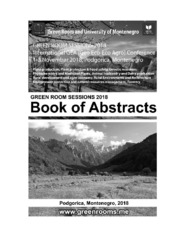Приказ основних података о документу
The effectiveness of growing measures within conventional and advanced maize cultivation
| dc.creator | Simić, Milena | |
| dc.creator | Dragičević, Vesna | |
| dc.creator | Brankov, Milan | |
| dc.creator | Tolimir, Miodrag | |
| dc.date.accessioned | 2022-10-21T09:10:58Z | |
| dc.date.available | 2022-10-21T09:10:58Z | |
| dc.date.issued | 2018 | |
| dc.identifier.isbn | 978-86-7798-112-9 | |
| dc.identifier.uri | http://rik.mrizp.rs/handle/123456789/1014 | |
| dc.description.abstract | Maize is a row crop with growing cycle from spring to autumn which makes weeds as limiting factor in production, especially when herbicides are not properly applied. The conventional maize production in Serbia means sowing on 70 cm row distance, application of standard forms of nitrogen, and pre-emergence herbicide treatment. The advanced technology for modern maize hybrid production that includes sowing with 50 cm row distance and slow-realizing urea and post emergence herbicide application, was tested. The experiment was conducted in the MRI Zemun Polje, Belgrade, during 2014-2016. Maize newly developed hybrid ZPSC 388 was sown with the application of standard urea and slow-realizing urea (triamid UTEC (n-butil) tiofosfat (NBPT), Eurochem Agro, Germany), both applied at the beginning of maize development. Within each N source, maize was grown with 50 cm and 70 cm row spacing. The herbicide treatments included: control with no herbicides, a pre-emergence treatment of S metolachlor+mesotrione (960 g ha-1 + 120 g ha-1 a.i.) and post-emergence application of nicosulfuron+mesotrione (40 g ha-1 + 120 g ha-1 a.i.). Three weeks after herbicides application, the dry biomass of uprooted weeds from 1 m2 (DBW) was measured, while maize harvest index (HI) and grain yield (GY), were evaluated when plants were fully matured. The DBW as well as HI and GY of maize were highly dependent on the meteorological conditions. Statistical analysis showed that average DBW was significantly lower in the post-emergence treatment (33.6%) than with pre-emergence application of herbicides, while row spacing and urea form did not affect weed infestation level. The HI and GY have been influenced significantly only by maize row spacing and reached higher values in 70 cm (for 4.7% and 19.9%, respectively). Results indicate that, despite weed biomass reduction, maize in Serbia still should be grown with 70 cm row spacing in order to achieve high biomass and grain yield. | sr |
| dc.language.iso | en | sr |
| dc.publisher | Podgorica : University of Montenegro, Faculty of Philosophy | sr |
| dc.rights | openAccess | sr |
| dc.rights.uri | https://creativecommons.org/licenses/by/4.0/ | |
| dc.source | International GEA (Geo Eco-Eco Agro) conference "GREEN ROOM SESSIONS 2018", Podgorica, 01-03.11.2018. - Book of abstracts | sr |
| dc.subject | maize | sr |
| dc.subject | conventional cultivation | sr |
| dc.subject | advanced maize cultivation | sr |
| dc.title | The effectiveness of growing measures within conventional and advanced maize cultivation | sr |
| dc.type | conferenceObject | sr |
| dc.rights.license | BY | sr |
| dc.citation.spage | 35 | |
| dc.citation.epage | 35 | |
| dc.identifier.fulltext | http://rik.mrizp.rs/bitstream/id/4876/16,2018.pdf | |
| dc.identifier.rcub | https://hdl.handle.net/21.15107/rcub_rik_1014 | |
| dc.type.version | publishedVersion | sr |


